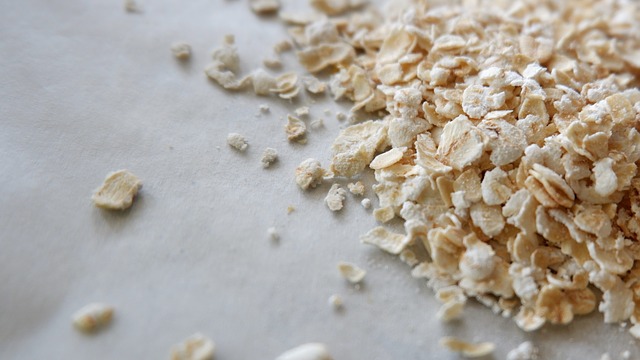As a child, I did not like the taste of porridge, it was bland, boring and mushy. However, as an adult I now love eating it and am having oats for breakfast most mornings in the week.
Over this last month, I shared with you 4 recipes: creamy cinnamon porridge, overnight oats, homemade granola and savoury oat and carrot pancake. Did you try of these recipes and which one was your favourite?
Did you know that oats are a very good source of fibre and one cup of cooked oats has 4 grams fibre in it.(Source: USDA food content) The recommended amount of fibre for adults per day is 30 grams (Source NHS), but many people may not be getting this much.
Benefits of eating oats:
As oats have both soluble and insoluble fibre, this bulks up the stool and helps it pass more quickly through the digestive system, reducing risk of constipation. Also, the fibre slows down digestion and keeps you full for longer.
It has been shown in many studies that eating oats lowers the risk of both heart disease and diabetes. Oats contain beta-glucans, a type of soluble fibre that is associated with lowering total and LDL cholesterol[1][2][3] and has also been shown to improve blood sugar levels[4][5].
Oats are a wholegrain and you can use either use rolled oats or steel cut oats, depending on how much time you have to cook them. In my recipes, I use rolled oats, as these cook faster.
When preparing your oats keep them healthy by:
- Using fresh fruit like apple or berries to sweeten it.
- If you are using dried fruit remember that this is high in sugar and to use small amounts.
- Use milk instead of cream it is lower in fat.
- Do try and make your own oats so you know what you are adding in. However, at times it’s not always possible to make it yourself so if you buy it do read the labels carefully to see how much sugar it contains.
REFERENCES
[1] Berg A, König D, Deibert P, Grathwohl D, Berg A, Baumstark MW, Franz IW.
Ann Nutr Metab. 2003;47(6):306-11.
[2] Karmally W, Montez MG, Palmas W, Martinez W, Branstetter A, Ramakrishnan R, Holleran SF, Haffner SM, Ginsberg HN.
[3] Braaten JT1, Wood PJ, Scott FW, Wolynetz MS, Lowe MK, Bradley-White P, Collins MW. Oat beta-glucan reduces blood cholesterol concentration in hypercholesterolemic subjects. Eur J Clin Nutr. 1994 Jul;48(7):465-74.
[4] Qingtao Hou, Yun Li, Ling Li, Gaiping Cheng, Xin Sun, Sheyu Li, and Haoming Tian,*
The Metabolic Effects of Oats Intake in Patients with Type 2 Diabetes: A Systematic Review and Meta-Analysis. Nutrients. 2015 Dec; 7(12): 10369–10387.
[5] Sadiq Butt M1, Tahir-Nadeem M, Khan MK, Shabir R, Butt MS. Oat: unique among the cereals. Eur J Nutr. 2008 Mar;47(2):68-79. doi: 10.1007/s00394-008-0698-7. Epub 2008 Feb 26.
